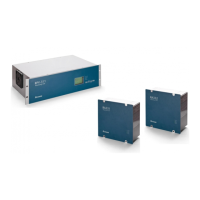Chapter 4 – Configuration
9 THRESHOLDS
Measured values are continuously monitored and may be tested once every cycle of the nominal frequency
of the system, against lower and upper thresholds and range rates involving:
Magnitude;
Frequency;
Active, Reactive, and Apparent Powers;
Positive and Negative Sequences;
Imbalance;
Digital Signals.
Variation (d/dt)¹
GOOSE Signals
¹ The variation thresholds are calculated with1 cycle time window
The results of all thresholds are processed using user-definable Boolean equations and can be used to
trigger the recording of fault, traveling waves, and disturbance data.
The thresholds can be associated with power, voltage and current circuits, digital channels or DC channels,
as follows:
Voltage and Current: upper and lower limits, and rate of change:
o - RMS value;
o - neutral RMS value;
o - RMS value of fundamental component;
o - RMS value of neutral fundamental component;
o - frequency;
o
- positive sequence;
o
- negative sequence;
o - imbalance;
o - total harmonic distortion.
o - voltage oscillation;
o - frequency oscillation (measured from voltage);
Power: upper and lower limits, and rate of change:
o - combined apparent power;
o
- fundamental apparent power;
o
- fundamental active power;
o
- fundamental reactive power.
Power: upper limits:
o - power swing.

